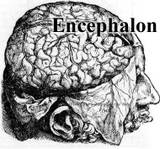Perfectionism and Anorexia
Beauty, fashion, and anorexia... when are they NOT in the news? But in the past few weeks, just like a model's hip bones, they've been even more prominent than usual.
Spain ban on skinny models shocks fashion world
 By Andrew Hay Tue Sep 12, 11:30 AM ET
By Andrew Hay Tue Sep 12, 11:30 AM ETMADRID. (Reuters) - The world's first ban on overly thin models at a top-level fashion show in Madrid has caused outrage among modeling agencies and raised the prospect of restrictions at other catwalk pageants.
Madrid's fashion week has turned away underweight models after protests that young girls and women were trying to copy their rail-thin looks and developing eating disorders.
and Natasha Poly (NYT).
Organizers say they want to project an image of beauty and health, rather than a waif-like, or heroin chic look.
But Cathy Gould, of New York's Elite modeling agency, said the fashion industry was being used as a scapegoat for illnesses like anorexia and bulimia.
 Duh, Cathy, maybe that's because so many models are anorexic and bulimic! And just who, exactly, thinks this is attractive, anyway? You don't see boys obsessing over their I
Duh, Cathy, maybe that's because so many models are anorexic and bulimic! And just who, exactly, thinks this is attractive, anyway? You don't see boys obsessing over their I  My Anorexic Girlfriend, Why Doesn't She Lose More Weight? MySpace pages! [all you pro-ana girls out there, please get some professional help! you have a serious psychiatric disorder.]
My Anorexic Girlfriend, Why Doesn't She Lose More Weight? MySpace pages! [all you pro-ana girls out there, please get some professional help! you have a serious psychiatric disorder.]OK, what about all the girls with eating disorders who are not models or starlets? And what does this have to do with neuroscience, anyway??!
Just like nearly everything else these days, anorexia has been a target for fMRI research. Many of these studies have compared the neural responses to pictures of food in anorexic vs. control participants, and have found abnormally paltry responses in visual cortical areas and inferior parietal lobe (IPL) in the eating-disordered patients. At the same time, anorexic patients showed increased activity to pictures of food in the medial prefrontal cortex (PFC), relative to controls (Uher et al., 2004). The authors attributed the overactivation in medial PFC to a compulsiveness akin to OCD or drug addiction. A recent study manipulated whether the participants were hungry or satiated (Santel et al., 2006).
Santel S, Baving L, Krauel K, Munte TF, Rotte M. (2006). Hunger and satiety in anorexia nervosa: fMRI during cognitive processing of food pictures. Brain Res. Aug 15; [Epub ahead of print]Most of the patients (n=9 out of 13) were inpatients, so
Neuroimaging studies of visually presented food stimuli in patients with anorexia nervosa have demonstrated decreased activations in inferior parietal and visual occipital areas, and increased frontal activations relative to healthy persons, but so far no inferences could be drawn with respect to the influence of hunger or satiety. Thirteen patients with AN and 10 healthy control subjects (aged 13-21) rated visual food and non-food stimuli for pleasantness during functional magnetic resonance imaging (fMRI) in a hungry and a satiated state. AN patients rated food as less pleasant than controls. When satiated, AN patients showed decreased activation in left inferior parietal cortex relative to controls. When hungry, AN patients displayed weaker activation of the right visual occipital cortex than healthy controls. Food stimuli during satiety compared with hunger were associated with stronger right occipital activation in patients and with stronger activation in left lateral orbitofrontal cortex, the middle portion of the right anterior cingulate, and left middle temporal gyrus in controls. The observed group differences in the fMRI activation to food pictures point to decreased food-related somatosensory processing in AN during satiety and to attentional mechanisms during hunger that might facilitate restricted eating in AN.
compliance with instructions was confirmed by clinical staff.[What about the other four patients?? Oh, OK]
Of originally 14 patients, one patient was excluded because of non-compliance with instructions.So when hungry, anorexic individuals may attempt to minimize the amount of attention granted to food stimuli, in order to bypass the intense signals telling them to EAT, EAT OR YOU'LL DIE! This isn't too surprising. The authors also hypothesize that in the rare instances when not hungry, decreased somatosensory processing (as indicated by decreased IPL activation) helps to limit the appeal of food, typically rated as disgusting by those with eating disorders.
Finally, perfectionism has been strongly linked with anorexia. A recent EEG study reported that anorexics show an abnormal index of error processing. Specifically, the error-related negativity component (recorded when subjects make errors) was paradoxically reduced in the anorexia nervosa patients, who were much more focused on accurate performance than controls. Here, the authors suggested that medial PFC hypoactivity was responsible.
Pieters GL, de Bruijn ER, Maas Y, Hulstijn W, Vandereycken W, Peuskens J, Sabbe BG. (2006). Action monitoring and perfectionism in anorexia nervosa. Brain Cogn. Sep 6; [Epub ahead of print]Fortunately, some in the fashion industry view anorexia as an illness, not as a beauty standard:
To study action monitoring in anorexia nervosa, behavioral and EEG measures were obtained in underweight anorexia nervosa patients (n=17) and matched healthy controls (n=19) while performing a speeded choice-reaction task. Our main measures of interest were questionnaire outcomes, reaction times, error rates, and the error-related negativity ERP component. Questionnaire and behavioral results indicated increased perfectionism in patients with anorexia nervosa. In line with their perfectionism and controlled response style patients made significantly less errors than controls. However, when controlling for this difference in error rates, the EEG results demonstrated a reduced error-related negativity in the patient group. These seemingly contradictory outcomes of improved performance and reduced error monitoring are discussed in relation with indications of anterior cingulate cortex hypoactivity in anorexia nervosa patients.
When Is Thin Too Thin?Reference
By ERIC WILSON
. . .
"We are minutes away from a catastrophe," said David Bonnouvrier, the chief executive of DNA Models, which represents many of the top faces in the business. In an interview, Mr. Bonnouvrier said designers and model bookers were encouraging extreme thinness, so much so that several of the models he represents, when asked about their weight, have refused to seek medical attention for what are probable eating disorders.
"This goes against everything we stand for as an industry," Mr. Bonnouvrier said. "I am kicking and screaming about it now because this should be an industry of beauty and luxury, not famished-looking people that look pale and sick."
Uher R, Murphy T, Brammer MJ, Dalgleish T, Phillips ML, Ng VW, Andrew CM, Williams SC, Campbell IC, Treasure J. (2004). Medial prefrontal cortex activity associated with symptom provocation in eating disorders. Am J Psychiatry 161:1238-46.
OBJECTIVE: The authors sought to identify neural correlates of eating disorders in order to contribute to the debate on the genesis and classification of eating disorders and provide endophenotypes for genetic research. METHOD: Twenty-six female patients with eating disorders (10 with bulimia nervosa, 16 with anorexia nervosa) and 19 healthy female comparison subjects matched for age and education were presented with food and aversive emotional images while brain activity was recorded with functional magnetic resonance imaging. RESULTS: Women with eating disorders identified the food stimuli as threatening and disgusting. In response to these stimuli, the women with eating disorders had greater activation in the left medial orbitofrontal and anterior cingulate cortices and less activation in the lateral prefrontal cortex, inferior parietal lobule, and cerebellum, relative to the comparison group. In addition, women with bulimia nervosa had less activation in the lateral and apical prefrontal cortex, relative to the comparison group. Between-group differences in response to nonspecific emotional stimuli were found in the occipital cortex, parietal cortex, and cerebellum. CONCLUSIONS: A medial prefrontal response to symptom-provoking stimuli was identified as a common feature of anorexia and bulimia nervosa. This finding supports a conceptualization of eating disorders as being transdiagnostic at the neural level. The abnormal prefrontal reaction is associated with symptom-related material, whereas the occipital and cerebellar differences are nonspecific. An abnormal propensity to activate medial prefrontal circuits in response to inappropriate stimuli is common to eating, obsessive-compulsive, and addictive disorders and may account for the compulsive features of behavior in these conditions.
Subscribe to Post Comments [Atom]



























